
70% of customers are willing to purchase more from brands that offer outstanding support across multiple customer contact channels. These figures derived from a recent study indicate the vital importance of customer support and how to select the best channels to provide it.
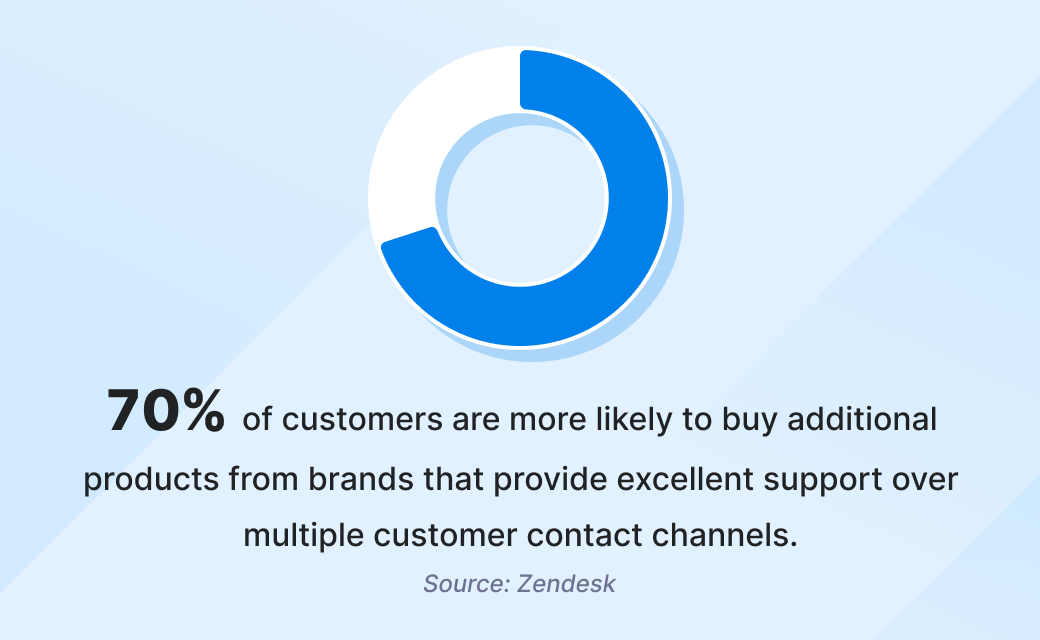
A customer channel is any method or platform used to interact with consumers at any touchpoint along their journey.
In this article, we discuss the best customer service channels available based on 15+ years of experience serving TextMagic users. These channels range from conventional phone calls and emails to AI-enabled communication and self-service support portals.
You’ll also learn how to identify the channels that will be most effective based on current data, costs, speed of implementation, and more.
What are the best customer contact channels?
Customer support channels are an important part of your customer experience (CX) strategy. The most effective options for your business will depend on the type of product or service you offer, the size of your organization, and your target audience.
Salesforce’s 2023 State of the Connected Customer shows how organizations use different channels to support their customers. Email and phone continue to be widely used while channels such as online communities and social media are decreasing in popularity.
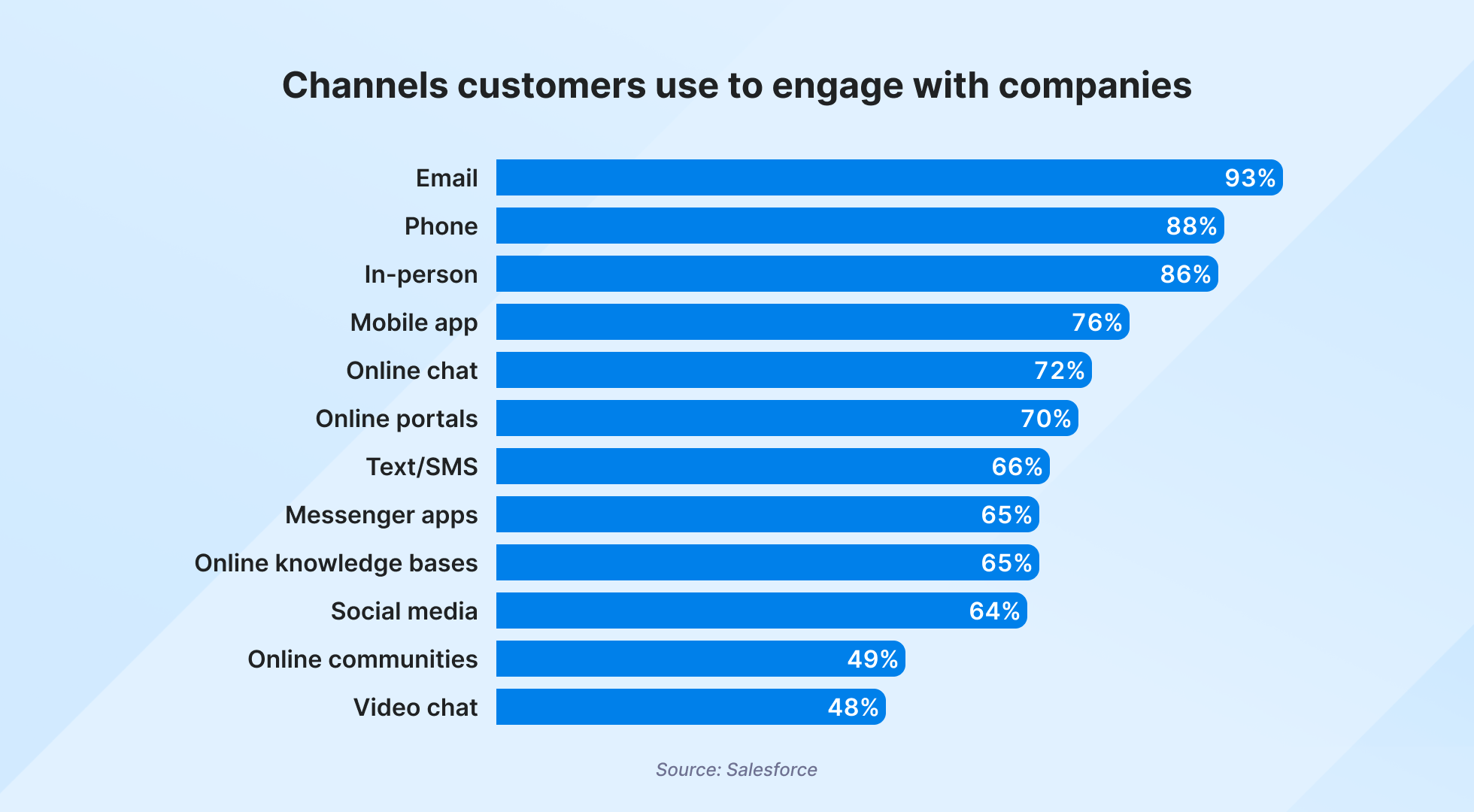
That’s why it’s so important to offer multiple customer contact channels and encourage your support team to master customer communication. Here are some common options to consider in this regard.
1. Phone
Phone interactions have an impressive customer satisfaction score (CSAT) of 86%. So, it looks like voice calls still remain the customer’s channel of choice across all age groups.
They also remain the preferred choice for 59% of consumers when contacting call center representatives.
What makes this channel so popular among customers? It’s real-time, immediate, and direct, so it makes them feel like they’ve been heard and valued.
📞 Phone calls allow you to handle urgent issues on the spot rather than wait for an email response or social media reply that may not come until later in the day (or not at all).
2. Email
The global count of email users exceeds 4 billion. It remains among the most important communication channels for Millennials, Generation X, and Boomers.
This support channel is great for customers who want to reach out quickly but don’t need immediate assistance. Email communication allows service agents to respond on their terms while also keeping track of individual conversations. Customer service email templates help streamline the response process.
Email is a viable customer contact channel when using services or products provided by international companies, where there may be language barriers and considerable time differences.
📧 Given email’s widespread usage, easy accessibility, and affordability, it’s recommended that you integrate it into your customer support strategy.
3. Social media
According to a SproutSocial study, 70% of U.S. consumers expect brands to respond to their requests on social media in less than 24 hours. Taking more than one day to respond is unacceptable.
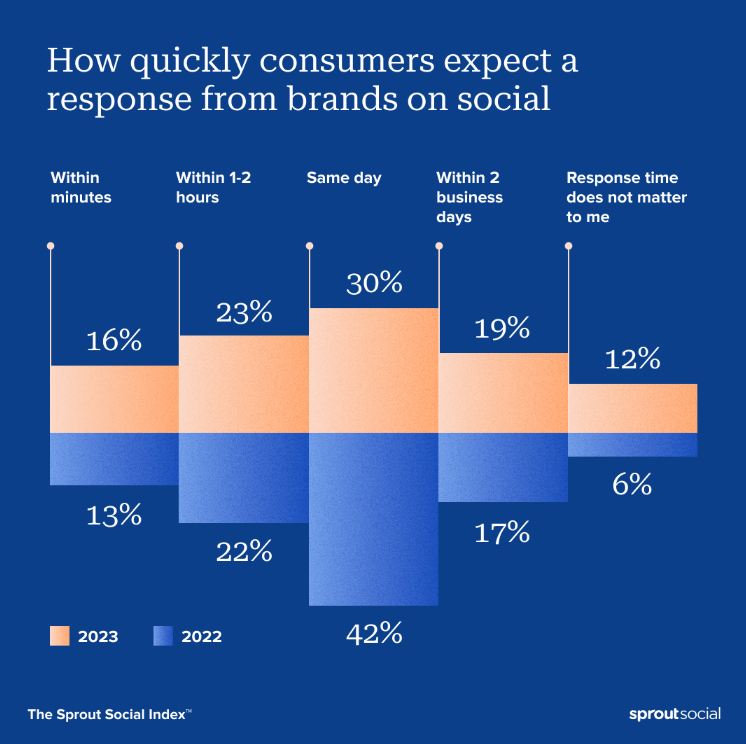
Image source: sproutsocial.com
Social media is an effective channel for customer service because it allows you to connect with customers in real time and provide instant gratification.
When customers are frustrated or confused, they tend to reach out on social. Responses to X, Facebook, or LinkedIn posts are public and can also provide information to other customers with similar issues.
- Taking time to respond to customer issues on social media helps you build trust.
- It encourages them to reach out when they have questions or concerns in the future.
Here are a few examples of companies that are champions of social media support:
4. Mobile messaging
As 97% of the US population owns a cell phone, mobile messaging is a great way to reach your customers when they’re on the go. It’s also convenient for them to get answers to their questions almost instantly. This is also one of the most direct and immediate ways to offer customer service.
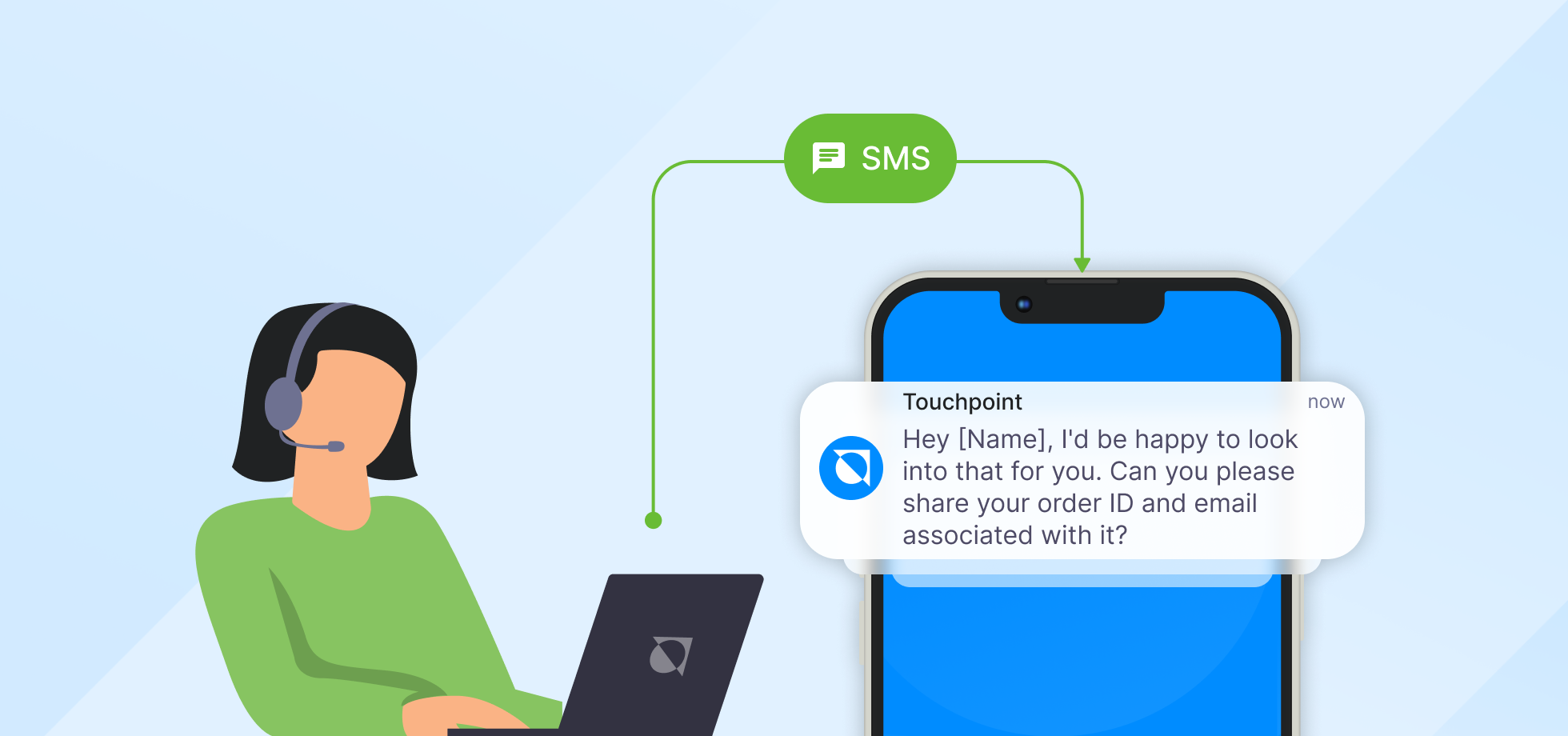
This channel can be established by using messaging applications like WhatsApp, Facebook Messenger, Viber, Telegrams, and other similar solutions. They are easy to install and free for customers. What’s more, by 2025, there will be over 3,5 billion mobile messaging app users globally, which makes this contact channel a good addition to your service stack.
Text messaging goes a step further. This mobile messaging solution comes as a built-in feature for all mobile phones and does not require any additional set-up or even an Internet connection to operate. More than two-thirds of buyers will use SMS to contact the customer support team.
Try our omnichannel chat widget for free
Chat, text, WhatsApp, Facebook, or email. Connect the way your customers prefer.
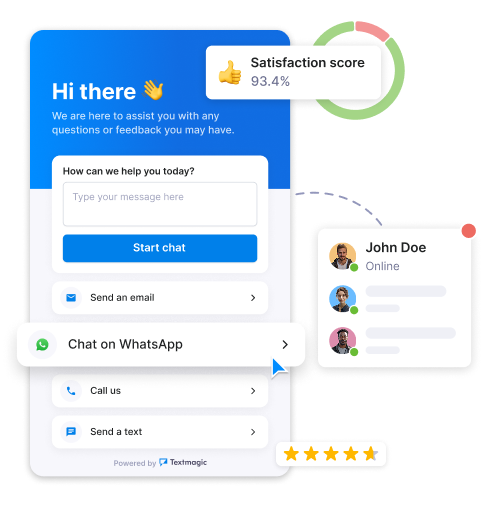
5. Live chat
While 72% of customers opt for using online chat to connect with a brand, only half of customer service teams implement this channel. Live chat is an online feature that allows customers to reach out with questions or concerns they may have.
To enable this customer contact channel, simply place a link to the chat support platform directly on your website or blog pages.
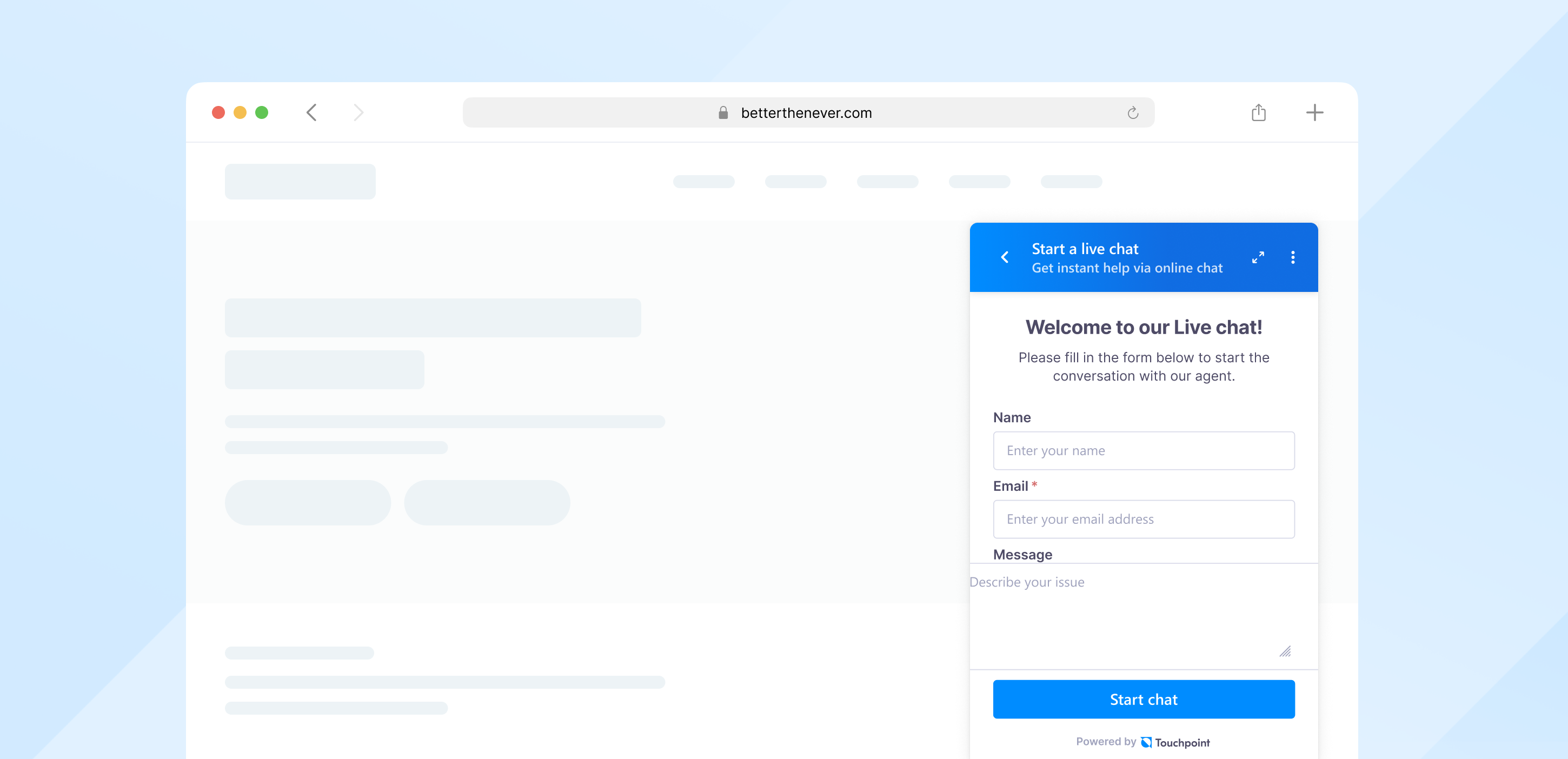
This is a customer contact channel with great potential as it combines the advantages of real-time communication, 24/7 availability, and a written form of interaction.
💬 Live chat also allows keeping track of essential information and referring back when necessary (for both the service team and the customer).
6. Chatbots
With instant responses and the ability to handle routine inquiries, chatbots minimize wait times and streamline support operations. This allows human agents to focus on more complex issues.
The positive feedback rate for chatbot interactions stands at 80%. This high satisfaction rate shows how chatbots can deliver relevant and helpful customer assistance.
🤖 You can integrate chatbots across various platforms. These can include websites, mobile apps, messaging applications, and social media. This compatibility allows customers to engage with your business through their preferred channel.
7. Video chat
Video chat in customer service adds a personal touch. It’s perfect for tricky or sensitive issues. Support agents can share their screens, walk customers through troubleshooting steps, or visually demonstrate solutions in real time. This can lead to quicker issue resolution.
Here are some use cases of video chat in customer service:
- Solving complex technical issues by visually diagnosing and troubleshooting problems
- Showcasing product features and functionalities through live video demonstrations
- Offering personalized consultations for customers to receive expert advice remotely
- Assisting customers with account-related queries (account setup, password resets, billing inquiries, etc.)
🎥 Through video, customers and agents can pick up on subtle cues, expressions, and tones that text-based communication may miss.
8. Web forms
A web form is a tool that lets you organize and manage customer support inquiries. These forms typically contain different sections, each of which is associated with a specific purpose.
Customers can fill out the fields and boxes with information about their issues. This information could be anything from “I forgot my password” to “I want to cancel my subscription.”
Such web forms integrated into different sections of your website can have different fields to fill in.
On Textmagic.com, we use simple web forms to route customer inquiries. Visitors can share their questions and issues by hitting the Help button in the lower right corner.
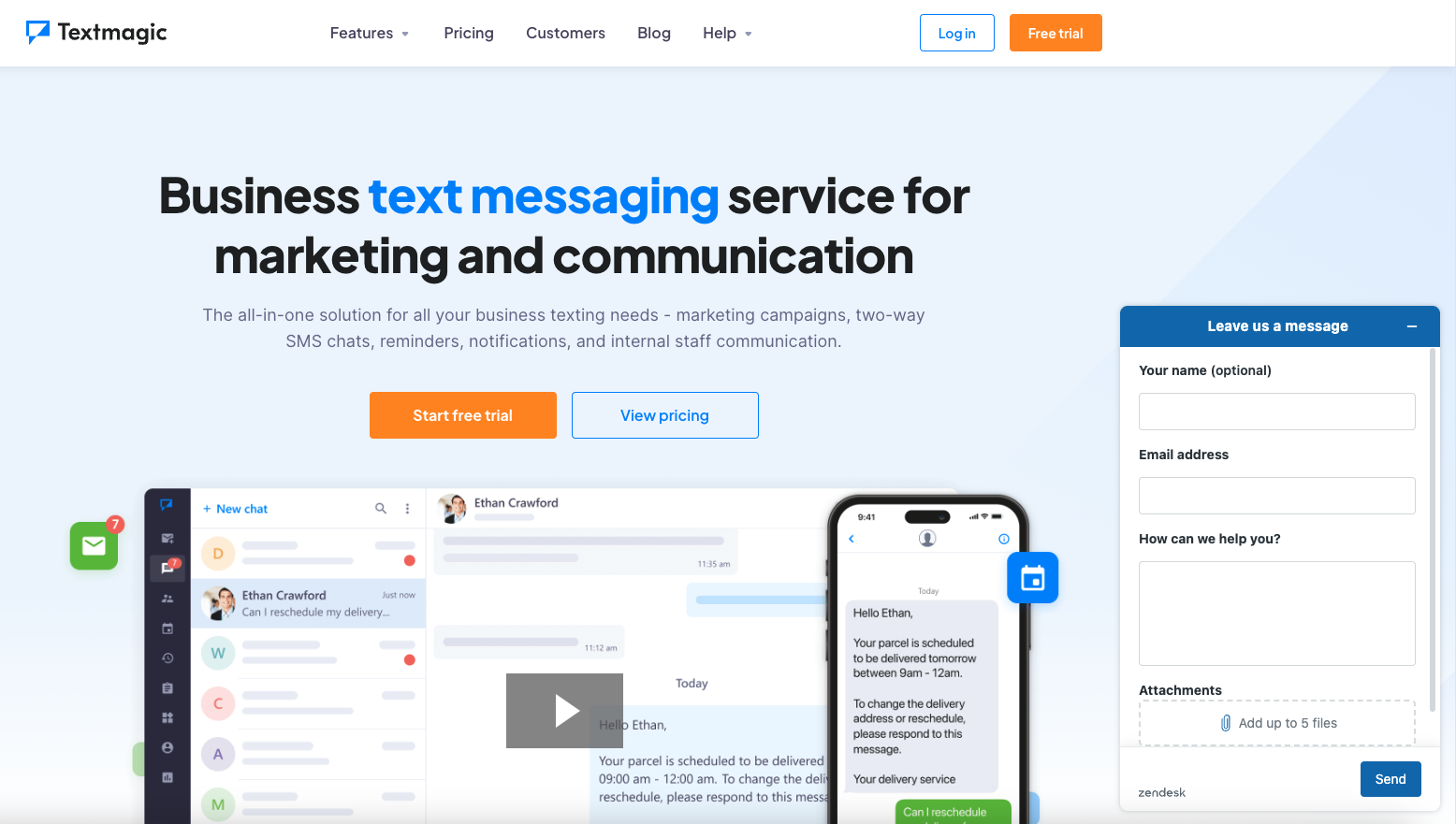
Another way to access the web form is to visit the Textmagic help center page after clicking on Contact us. Discover our helpful resources, including how-to articles, video tutorials, FAQs, and changelogs. If you prefer direct assistance, you can contact us using our web form.
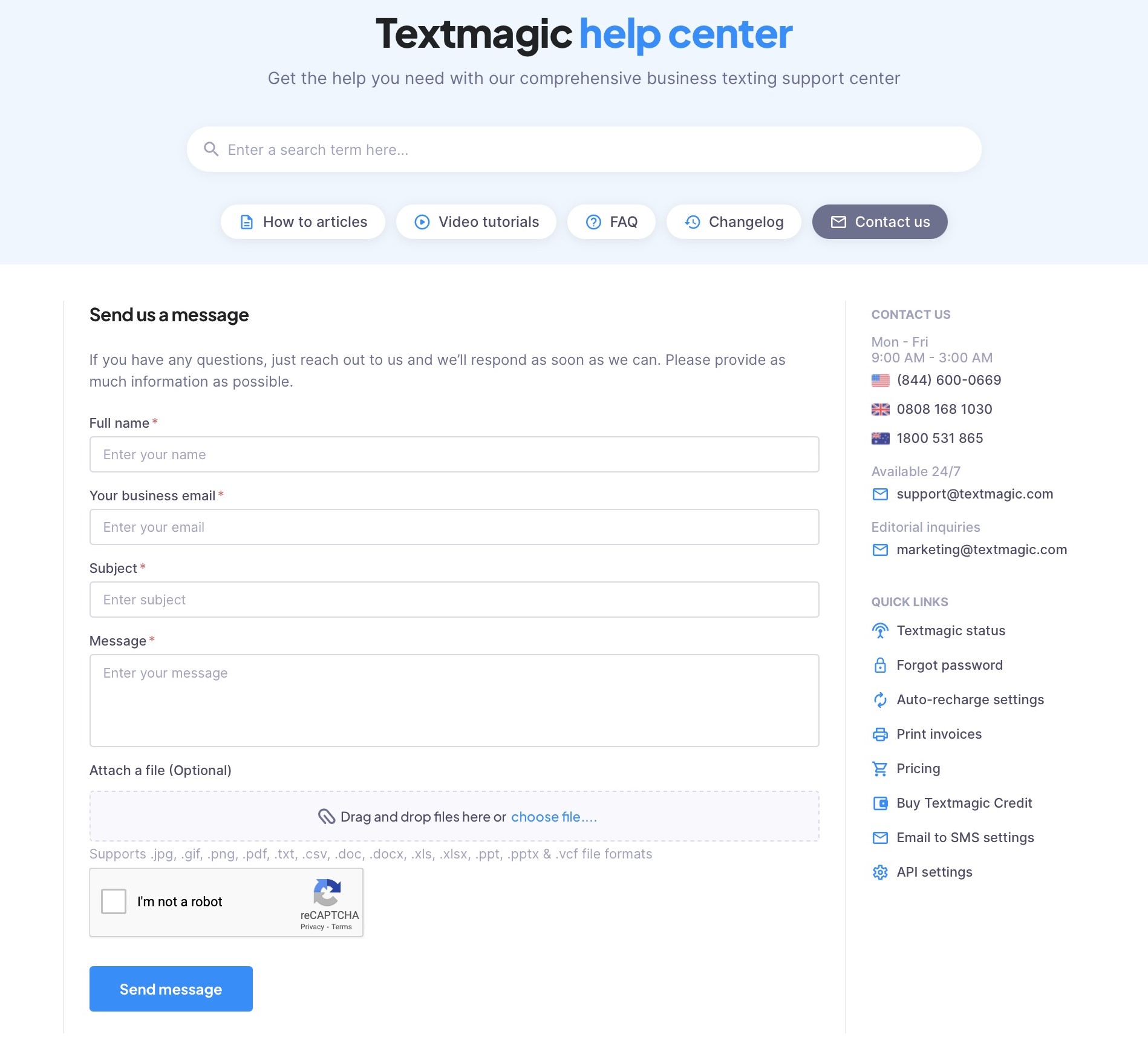
📝 Web forms are effective, as they allow customers to submit their questions in an organized manner. This helps route questions to the right department and reduce their resolution time.
9. FAQ pages
You can’t always be there to answer questions personally. But a frequently asked question (FAQ) page can. FAQs are an excellent way to provide your customers with answers to common questions in an organized and accessible way.
FAQ pages should be concise and easy to read. They should clearly explain what a customer can expect from your product or service and how they can deal with something that isn’t covered on the FAQ page itself.
FAQ pages can help you in many ways.
- Save time by answering common questions without having to spend time fielding individual inquiries.
- Help customers help themselves with answers to very specific issues.
- Build trust by showing that you’re transparent about the services you provide and how they work.
🛒 If your company follows a PLG (product-led growth) strategy, FAQ pages represent one of the best ways to help customers find solutions independently.
10. Self-service customer support portal
69% of customers prefer to tackle as many problems as possible on their own. However, just a third of companies provide users with self-service options. To be effective at customer support, it’s important to offer multiple avenues for customers to find answers independently.
By empowering users to address their own concerns, companies can streamline processes and improve customer satisfaction. This shift towards self-service reflects a proactive approach to modern customer-centric strategies.
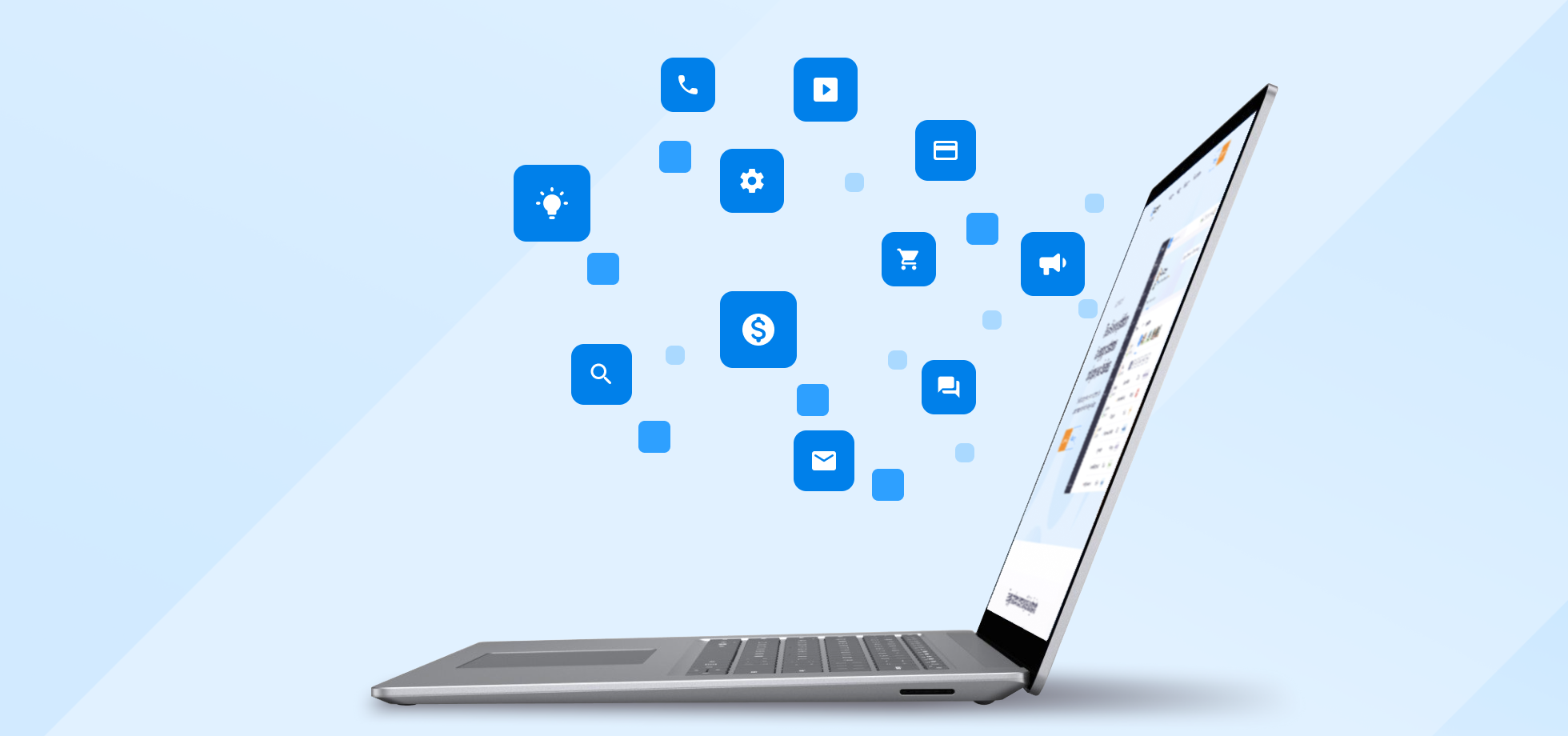
A self-service customer support portal available on a business website can go a long way to providing customers with the independence to solve common issues. Such a portal can include:
- A public knowledge base
- FAQ pages accessible from all areas of the site
- Community forums and boards for customers who want more in-depth help with individual topics
Here’s why you should opt for creating a self-service customer support portal on your website.
- It saves you time by eliminating the back-and-forth between you and your customers when they have simple and straightforward questions or concerns. You can just refer them to the online content.
- It allows your customer service professionals to focus on the more complex issues.
11. IVR
Due to their accessibility, interactive voice response (IVR) systems are increasingly becoming a popular customer contact channel. Projections indicate that the IVR market will exceed 9.6 billion U.S. dollars by 2036.
With IVR, customers can navigate through automated prompts to access information or resolve issues without human interaction. This level of automation can significantly reduce call wait times and streamline the customer experience.
These systems often include options for self-service, such as:
- Making payments
- Checking account balances
- Updating personal information
🔊It’s crucial that you design your IVR system with customer convenience in mind. Clear and concise prompts, intuitive menu options, and seamless transitions to live agents when necessary are essential for a positive IVR experience.
12. In-store experience
Unlike remote communication methods, in-store experience provides customers with a tangible and immersive interaction with your product or service. Customers can see, touch, and sometimes even sample products before buying.
This hands-on experience can influence purchasing behavior and potentially create a connection between the customer and the brand.
From store layout and design to interactive displays and demonstrations, each element is part of the shopping experience. Some examples of these elements include:
- Pop-up events or workshops where customers can engage with the brand
- Interactive product demonstrations where customers can test item functionalities
- Augmented reality (AR) or virtual reality (VR) experiences that showcase products
🛍️ Continuously evaluate and optimize the in-store environment to create a welcoming atmosphere that encourages customer engagement.
How to choose the right customer channels
Selecting the most effective contact channels without overwhelming your team or creating fragmented experiences can be difficult.
Here are the most important factors to consider when selecting a customer contact channel for your business.
Research the support solutions used in your target industry
Keep an eye on your competitors to see what is working for them:
- What solutions are they applying?
- What do their clients report?
- What are they satisfied with?
- What are they complaining about?
💡 All these questions will help you acquire a better understanding of what works and what doesn’t work in your industry.
Get input from your leads and customers
Here are some ways you can get input from your audience to choose the right customer contact channels.
- Run a survey via email or social media asking people what their preferred method of communication would be if they were in trouble with a product or service.
- Ask them how they would prefer to be contacted in an emergency situation involving one of your employees (or yourself).
☝Remember that what makes a customer support channel effective is whether it’s the platform your leads and customers prefer using.
Audit the customer contact channels you currently use
Auditing the customer contact channels you’re currently using can help determine where your strengths and weaknesses lie. There are a few steps to follow for this.
- First, make a list of all of the contact channels you’re currently using. Think about the particular purpose of each one.
- What do customers usually use each channel for? Do they ask pre-purchase questions or questions related to the use of your product or service? Do they seek your help in resolving an issue or make their complaints using the contact channel?
- Then, check the time it takes you or your support staff to respond. 70% of customers expect that whoever they interact with has complete context. Failure to live up to these expectations may cost you your business.
- Now, it’s time to look at the number of customer complaints and compliments about the support they get on each channel. Look at CSAT, NPS, and other customer success metrics to identify the platforms that perform best and that need your attention.
- Is the channel too slow?
- Does it require too many steps from the customer?
- Are there too many options for the customer to choose from?
- Do buyers have trouble reaching someone when they need help?
You can use analytics to compare results across different channels, like the number of customers reached and the number of messages sent per day. Also, consider using heat mapping tools to record the users’ experience with channels, such as web forms.
👥 Decide on possible measures to make the improvements. For instance, if your customers typically need to wait a long time for a response from your support team or they try calling many times, you may have to increase the number of your staff.
Consider the cost of the channel
Customer contact channels can be expensive. It’s important to know what you’re getting into before you go all in. There are three main ways to estimate the cost of your customer support channel:
- The initial setup costs
- The ongoing costs
- The costs of switching channels
When you’re considering cost, keep in mind that there are many other factors that go into choosing a support channel besides just the price tag. The amount of time your team spends on support is a good indicator of the suitability and cost-effectiveness of a given channel.
Live chat, for example, is typically more expensive than email. However, it can also be more effective as it allows you to respond to customer inquiries instantly.
🤑 If you’re a small startup, using email as a customer support channel can be your most cost-effective option. Striking the balance between effectiveness and cost-effectiveness is the best approach.
Best practices for customer channel management
Effective customer channel management helps you stay ahead of the curve. Aleksandra Lemzyakova, our head of customer support, backs that up:
“Effectively managing customer channels is key to enhancing engagement and support. It’s not merely about presence across platforms; it’s about selecting and optimizing these channels to align with customer preferences. This ensures consistent, responsive, and personalized support, improving customer satisfaction and loyalty. By fine-tuning our strategy across all touchpoints, we make every interaction meaningful and build stronger customer relationships.”
Let’s explore some best practices to help you excel in customer channel management.
- Invest in channel management software: Consider implementing channel management software, such as customer relationship management (CRM) systems. This can streamline operations, automate routine tasks, and provide partners with the necessary resources in one consolidated space.
- Invest in agent training and support: Create a supportive environment for your agents with regular coaching and fair workload distribution. These practices enhance the customer service experience and prevent burnout.
- Incentivize and reward channel partners: Motivate your partners with incentives like performance bonuses, tiered commissions, and public recognition. Ensure that these reflect the evolving needs of your business and your partners.
- Adapt to market changes: Stay informed about market trends and adjust channel management strategies accordingly. Personalize sales and marketing approaches and invest in automation and AI tools to remain competitive.
Try our omnichannel chat widget for free
Chat, text, WhatsApp, Facebook, or email. Connect the way your customers prefer.

Decide which customer channels work for you
With rising competition, customer support remains one of the main quality differentiators. Choosing the right customer contact channels is the first step to achieving a positive multi-channel customer experience.
Social media provides instant connections, while mobile messaging ensures convenience. Video chat adds a personal touch, while chatbots offer immediate assistance.
The key to success lies in accessibility, responsiveness, and empathy. Whether it’s through quick responses or face-to-face interactions, focus on creating strong connections with your customers. Adapt to the changing customer preferences to ensure your approach remains relevant.
Frequently Asked Questions (FAQs)
SMS, live chat, and email all contribute to excellent customer satisfaction in their own ways.
SMS is perfect for instant notifications, live chat supports fast problem-solving with real-time dialogue, and email gives customers a flexible channel to explain complex issues in detail.
You can start by combining SMS and email as part of your customer communication strategy and add live chat later. Textmagic allows you to send time-sensitive texts and engaging email campaigns to help you increase customer satisfaction.
In simple terms, a customer distribution channel is how your business connects with customers. It can refer to physical methods (like in-store sales) and digital ones (like SMS, email, or chat).
Phone calls and live chat are often preferred for handling customer complaints because they allow open, two-way conversations. When someone can speak directly with a representative, it’s easier to clarify confusion and offer quick solutions.
The key to managing complaints well is to stay calm and patient throughout the interaction.
Let the customer express their concerns without interruption, acknowledge their feelings, provide transparent explanations, take ownership of the issue, and always close with a positive resolution.
Related articles
A step-by-step guide to successful omnichannel communication
Discover the power of omnichannel communication for ...
Overcoming customer pain points: 20+ Strategies that work
Have you ever examined your customers’ journey from ...
15 Examples of good customer service & key practices to deliver it
The impact of customer service on brand perception c...
How to craft a customer acquisition strategy that drives results
Acquiring new customers can be challenging for busin...
Omnisend vs. Textmagic: Which platform is right for your business?
To build genuine customer relationships, businesses ...




